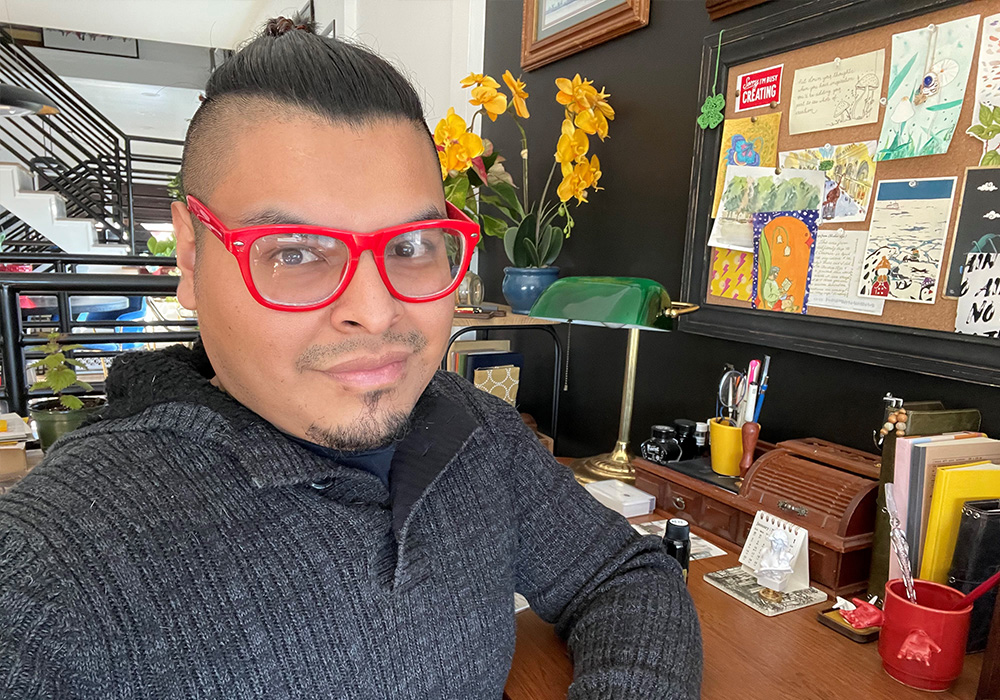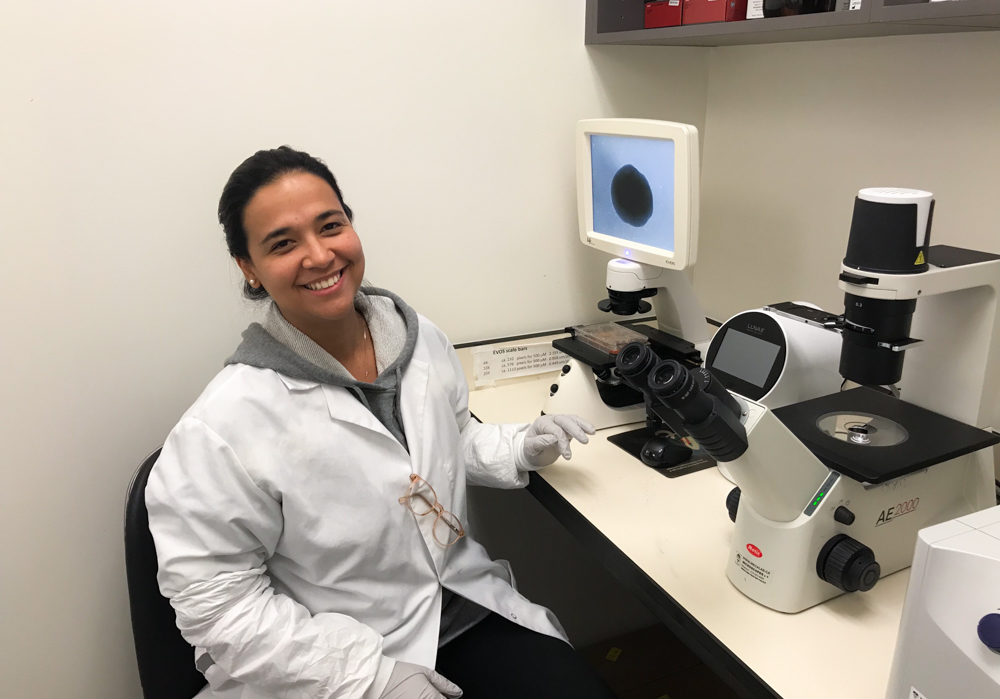PLOTTERs are active in a variety of worlds, and their energy is full of creativity. PLOTTER Magazine highlights change-makers who trace their steps from the past to the present and lead the future in a positive direction. Through their ideas and values, we hope that the stories of PLOTTER, like the tools we create, will inspire you for your creativity.
We interviewed Erick Gama who works in the interior design industry. His role at his furniture company is to respond to requests for proposals for clients and provide solutions at the best price to win the business. It includes detailed planning of products, design, and number-crunching daily. Erick is also the co-host of a stationery-themed podcast in Spanish called Tinterías. Weekly, he shares his passion for analog and cultivates a community in the Spanish-speaking audience.
Erick has an affinity for quality tools in his analog routine. In this interview, Erick shares his journey of how he grows into his current role at work and how PLOTTER helps him manage tasks and deadlines.
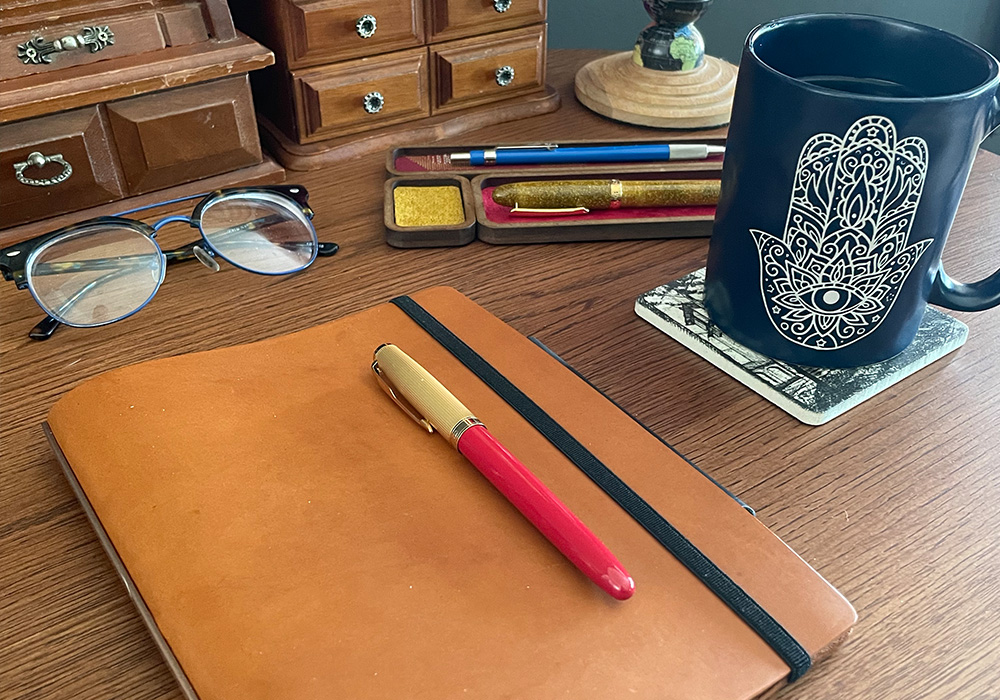
With a degree in interior design, how did you find yourself in this phase of your career?
My degree is in interior design, but it was very hard to find many opportunities when I graduated in 2013, still coming out of a recession. I tried to grasp all kinds of internship and work opportunities I could find in the furniture business while making ends meet working at a part-time job at Macy’s. I wasn’t discouraged though because I was young and had a lot of energy.
When I stumbled across this job, I was willing to take on anything, even if it was something new that school never taught or prepared us for. I pivoted from interior designing into this job that is half creative, half technical number planning. To this day, I’m still using the skills I’ve learned in space planning, color design, and all that fun stuff. However, being detail-oriented with numbers, budget planning, and staying organized is much more important in this area of the interior design industry. A small error in documenting the model number can cause the company to lose a lot of money. Although it is stressful at times, when we win proposals the sense of achievement is very rewarding.
As a strategic response designer, how do you incorporate analog into your line of work?
Although my company is very technology dependent, I still prefer keeping a project note. A lot of times when we’re out in the field, we may need to sketch something or visualize the proposal to our clients. I also prefer taking notes by hand during meetings: things I need to focus on and the client’s needs and such. In my notes, you’ll see that I like creating graphs and tables to help me visualize quick calculations. I don’t know if anyone else in my team does this, but it’s what’s helpful for me to accomplish the goal of the project.
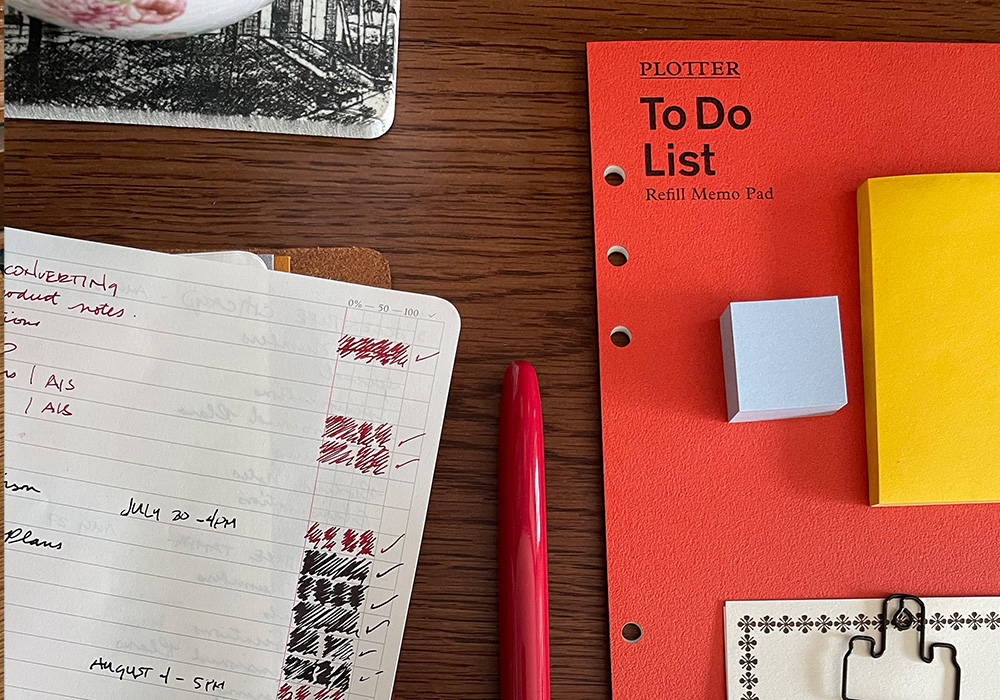
How has PLOTTER helped you manage tasks and projects for work?
PLOTTER came to me at a point where I was overwhelmed at work. We had three projects going on at the same time and there are different prerequisites and deadlines to keep track of. I started using PLOTTER to organize my to-do list and figure out prioritization, especially since the way we manage our time spent on projects is measured down by the minutes. I enjoy using my PLOTTER in A5 Liscio Brown. My to-do list includes sketches, renderings, planning, notes, and follow-up with clients. Therefore, it is helpful to use the To Do List to manage and visually see how each project is progressing, especially when they are all work-in-progress in the same timeline.
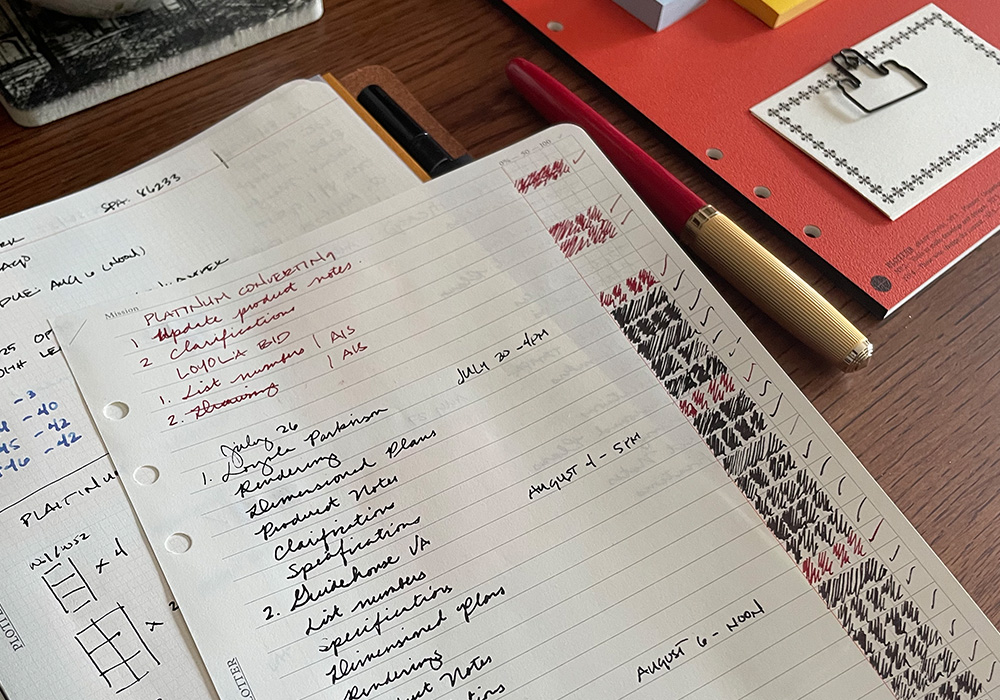
What other accessories do you like to use with PLOTTER?
I separate my work pages from my projects like the podcast using the Project Manager refills. In each Project Manager, I combine both To Do List pages and the 2mm Grid Refills for notes. Flipping between the To Do List and project notes is very helpful. I also think the Gantt charts printed on the Project Manager are very clever. It will be very useful for long-term project timelines that we have sometimes.
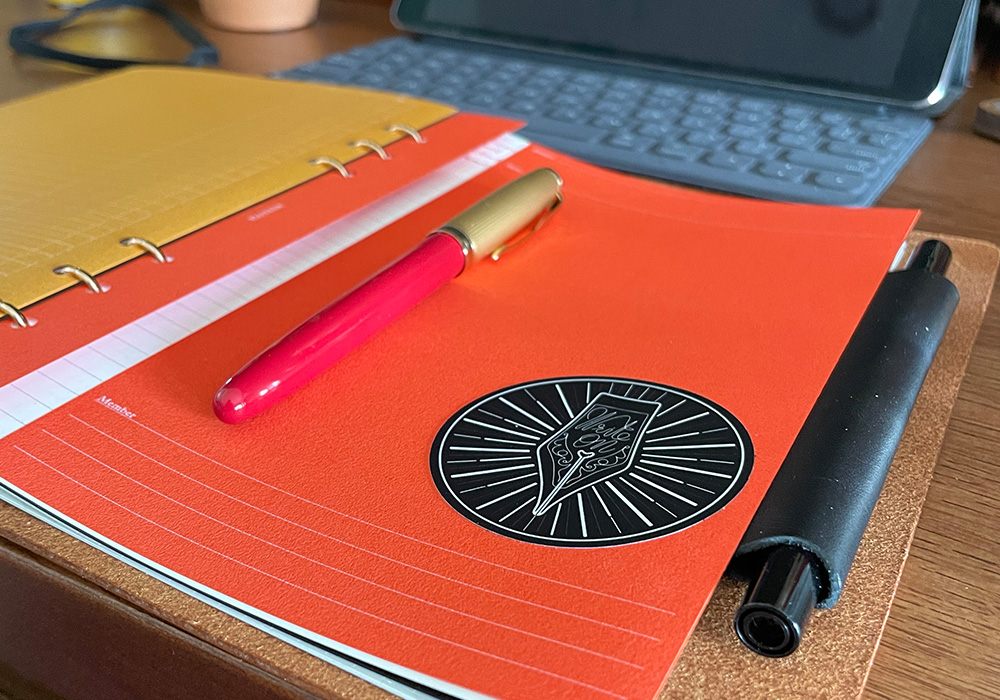
I also add extra information I need with sticky notes and move them freely between the pages. I use bright-colored memo notes to make important notes jump out to me. When I’m in a meeting call, I could quickly reference my pages just because of how I’ve had it all organized in my PLOTTER. I think one of the cool things about PLOTTER is that it makes what you work on feel special, even if they are just mundane pages with messy notes. You will enjoy referencing it all the time.
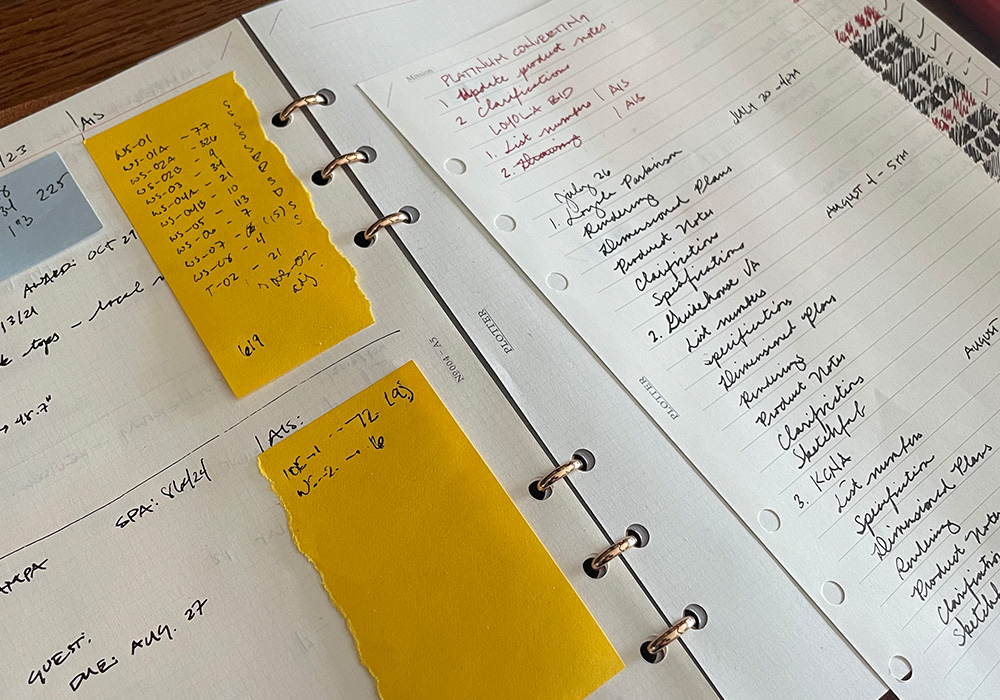
You’ve come a long way to get to where you are today. Who had influenced you in your journey?
You know what? I think it comes from my parents—they’ve always been hard workers. My father had developed his own landscaping business from scratch. “If you can, if you’re able, then why not? Why don’t you?” is what they like to say. I’ve learned to hustle like they did throughout my school years, always having a part-time job so I can enjoy my hobbies of reading and music. I still remember when I would be on my feet for six hours selling makeup or fragrance. The commute from my day gig from the office to the mall would be when I take my day’s break.

What keeps you going when the industry and the current climate make your work challenging?
Especially since COVID, the competition in our industry has gone up because fewer people are working in the office. Our team’s mission is to secure as many successful projects for the company as possible. Although the work is hard at times, what keeps me going is envisioning the result of each case. I think about the people that will one day occupy and use these well-furnished office spaces enjoy the environment and be productive for the future.
There’s something quite exciting about interior design. The furniture is what makes space and makes it comfortable for the user. Lighting, theme, and even a single chair makes all the difference.
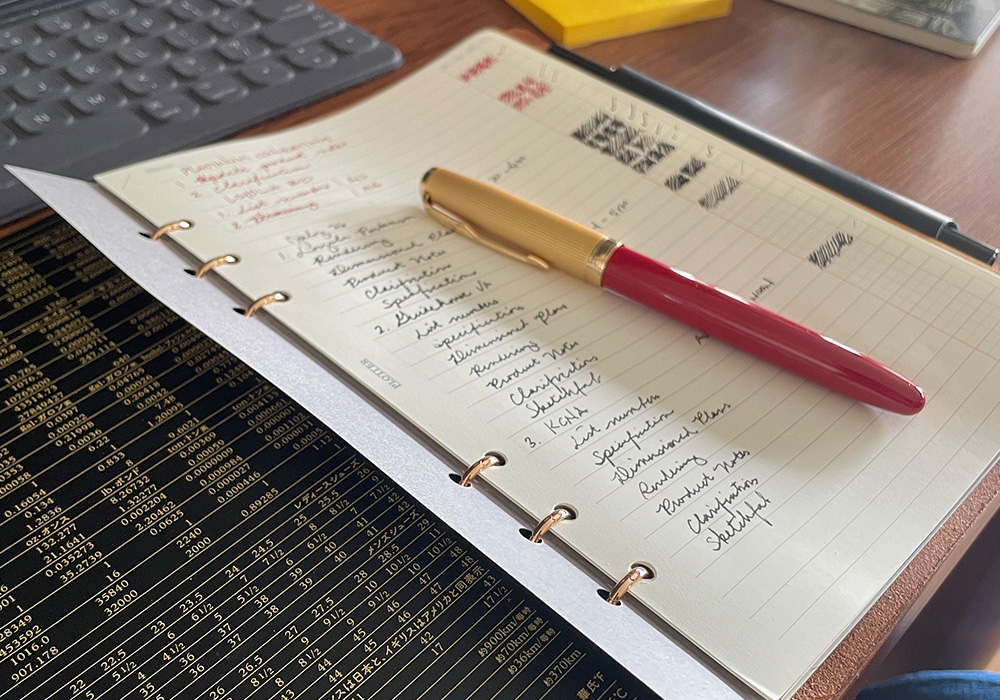
Finally, what kind of person do you think PLOTTER is for?
I think PLOTTER is a great tool for designers, project managers, people who have a lot of deadlines and tasks to keep tabs on. When I’m holding PLOTTER in my hands, I feel in charge of my day, in charge of my week. Even though work may be stressful, I can rely on my notes to complete my projects.
[ Erick Gama, Strategic Response Designer ]
Erick Gama currently works as a Strategic Response Designer at a furniture company in Chicago. He is also the co-host of Tinterías, a Spanish podcast dedicated to the discussion of fountain pens and stationery items for the Spanish-speaking audience. Outside of work, Erick enjoys pursuing interior design and architectural blogs, trying out new pens and inks, reading, and spending time with his partner and his dogs. You can find Erick Gama on Instagram as @_erickgama_
